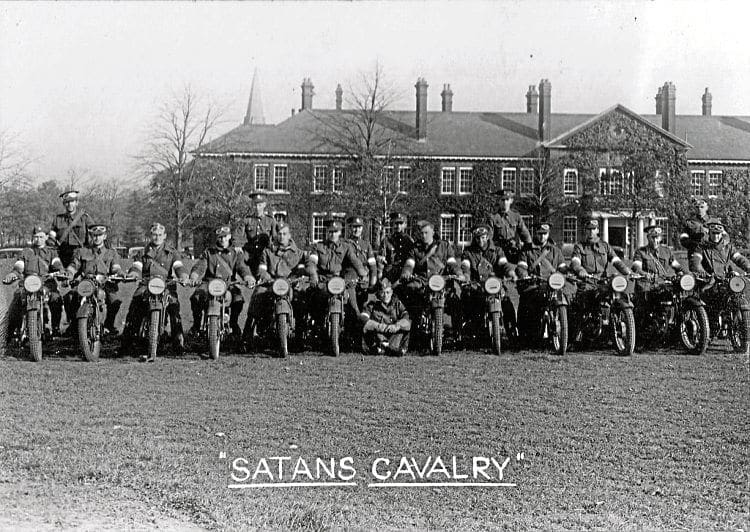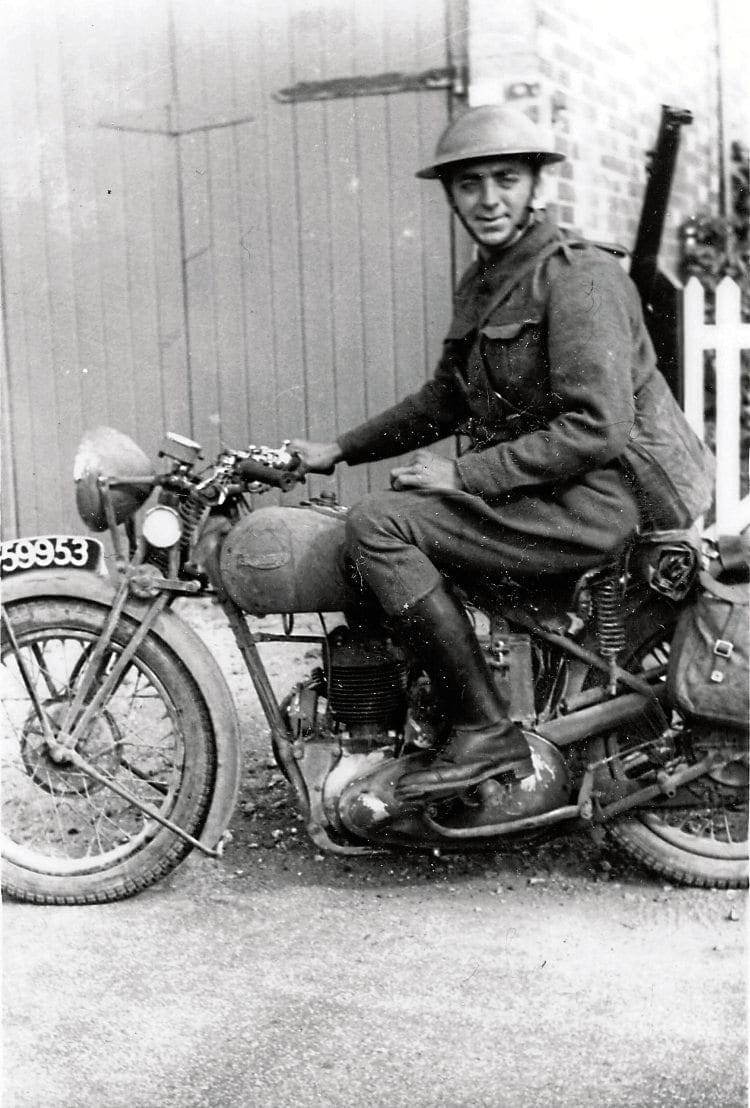Peter Morley brings a heartwarming story about his late dad’s determination to return to a decent civilian life after the war, and the motorcycles that helped him to do it.
Motorbikes first came into my life in the early 1950s when my dad bought a 175cc Excelsior to get to and from his first proper job, which was 25 miles away from home.
Just like many other OBM readers, I’m a ‘baby-boomer’, having been born the year after Dad came home, got his de-mob suit and started to rebuild a life. He’d been a professional ice skater before the war, but there wasn’t much call for that in 1945 and he took whatever work he could get – hotel porter, labourer or handyman.

We lived in an old tin hut on a wartime airfield at Holmsley, in the New Forest, and other makeshift accommodation, including a converted bus that had been used as a mobile morgue during the war.
Eventually, the Government’s social programme brought us a council flat and Dad got a job in
the oil refinery, and hence the bike. Things were really looking up, and it wasn’t long before we graduated to a sidecar outfit – a 1952 AJS Model 18 and an open plywood sidecar.

We visited family and even went on holiday to Dorset with an ex-WD duck canvas tent. The sun always shone during those years.
Flat cap
I generally rode pillion. The bike had a rigid rear-end and, inexplicably, a dual seat which wasn’t comfortable at all. Dad kitted us out with ex-WD tank suits. I had a second-hand Corker, but Dad always rode in a flat cap. We picked up other wonders in the ex-Army shop, including tank aerials to make 12ft-long fishing rods, and also acquired a pair of ex-RAF flying boots. They were sheepskin-lined but made of a sort of suede that acted as a sponge when it rained. They were discarded in favour of wellies and seaman’s socks.
Read more in the June 2018 issue of OBM – on sale now!





